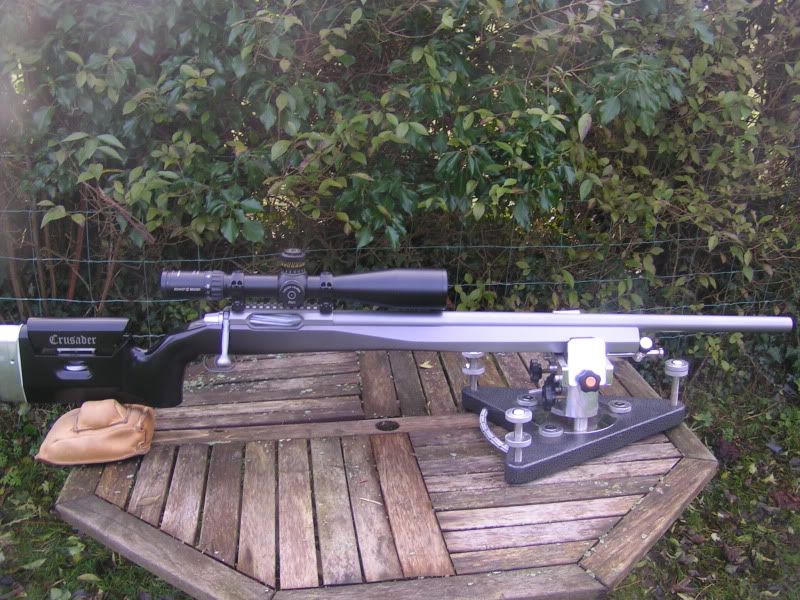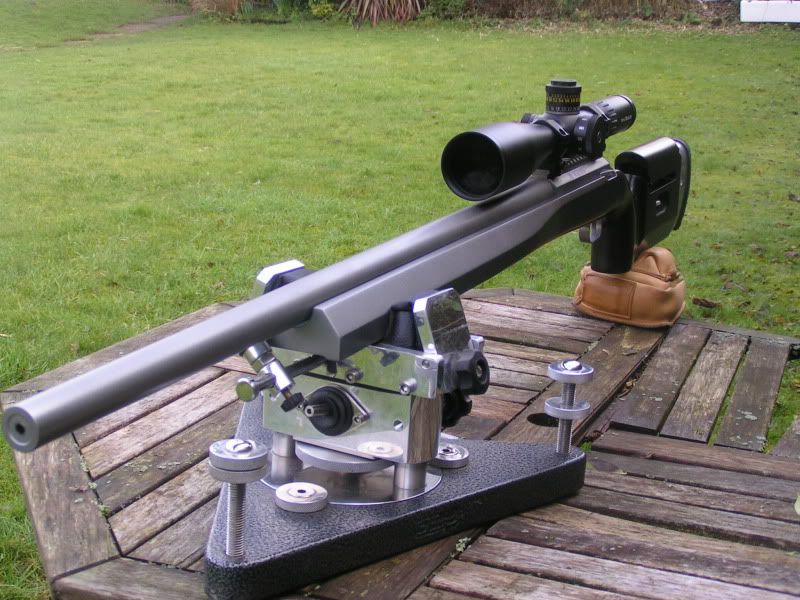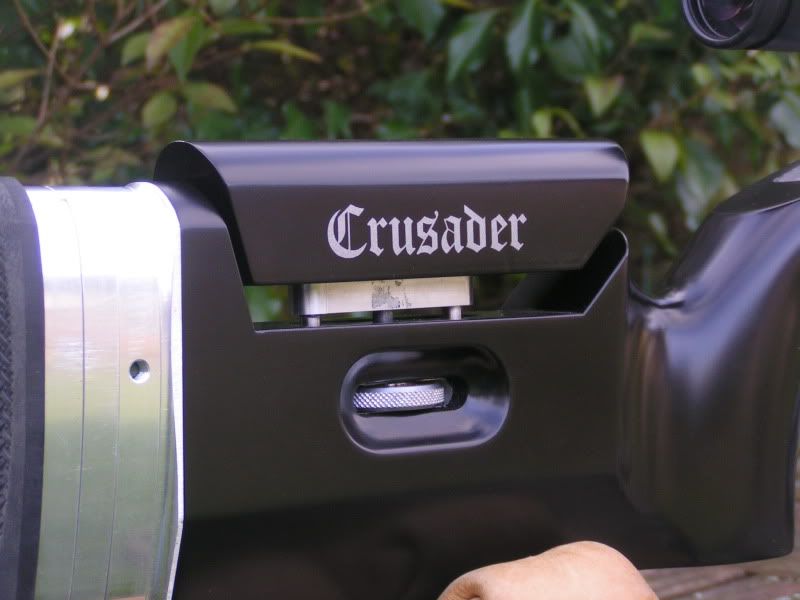Re: 6mm Crusader
Alright, I experimented with fireforming with subsonic loads tonight and it worked like a charm. I went out and got some Sierra 100 gr. Spitzers #1540 and some Trailboss. These are 1.035" long and the Miller formula give 1.7 for 1050 fps. I have no idea if they are keyholing or not since I did this testing on a 20 yard indoor range.
My barrel is a 27" Bartlein 5R 0.237" dia. lands 1-8" twist. I always lube the barrel with CLP and apply a light amount of oil to each bullet when doing subsonics in a long barrel. That's what seems to work with .308 to get consistent velocities anyway.
I started by playing around with some already formed cases to get the charge weight. 10.0 gr. seemed to get me to the desired velocity. I got:
1057 fps.
1040 fps.
1020 fps.
995 fps.
So, I took some virgin RP 6mm Rem brass and loaded the bullets so that they were just touching the lands. I got the following velocities:
1042 fps.
1022 fps.
1000 fps.
997 fps.
? (CED missed it)
The cases were nicely formed with only a slight rounding on the shoulder which I'm sure you still get with COW and Hydraulic methods. I loaded them up again to see if I could sharpen the shoulder, and I got these velocities:
1064 fps.
1011 fps.
992 fps.
<span style="font-style: italic">*noticing a trend here, I applied heavy lube to the last two bullets:</span>
1029 fps.
1027 fps.
The shoulder didn't get any sharper, but I think the experiment implies that heavy lube is needed for getting the velocities to be consistent in the long barrel. The cases looked like this:
Virgin 6mm Rem case, five cases formed with subsonic loads, 6mm Crusader case with multiple firings
So, there you have it; you can form cases with subsonic loads and it's a lot more fun than COW or getting wet and wild with your loading press. Some more experimentation is definitely needed to see if the bullets are stable. But, if they aren't, I'm pretty sure one of the 80-90 gr. bullet will stabilize and there should still be plenty of pressure to blow out the case. Remember, we're dealing with a fast burning pistol powder here; the pressure curve is a quick impulse just like you get when you hit the hydraulic die's plunger with the hammer. It blows out the case, very little heat is created and there is not much friction with the CLP being applied to each bullet. It shouldn't affect the life of the barrel in a very significant way. It's similar to a .22LR shooting plated bullet (but the bullet are lubed).











